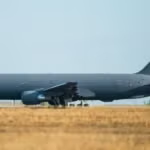
There are relatively few illegal border crossings from Canada into the U.S. and the most common threat the U.S. faces in terms of illegal activity along its northern border is the two-way flow of illicit drugs, according to a new report the Department of Homeland Security (DHS) delivered to Congress.The report says that for the past five years less than 800 illegal border crossers from Canada into the U.S. have been apprehended every year, most of them Canadian citizens. This…

 By
By 











